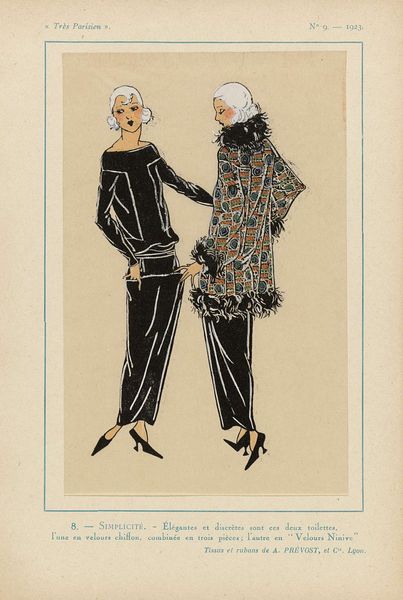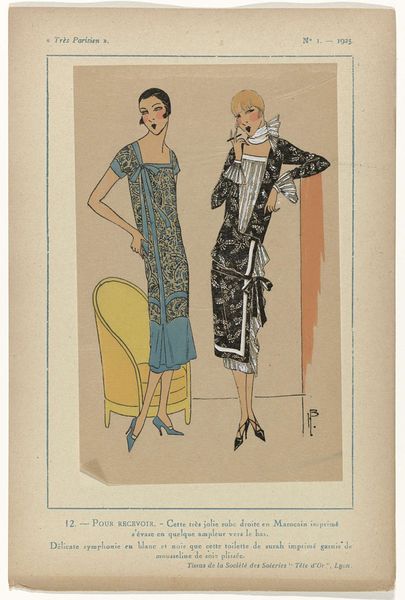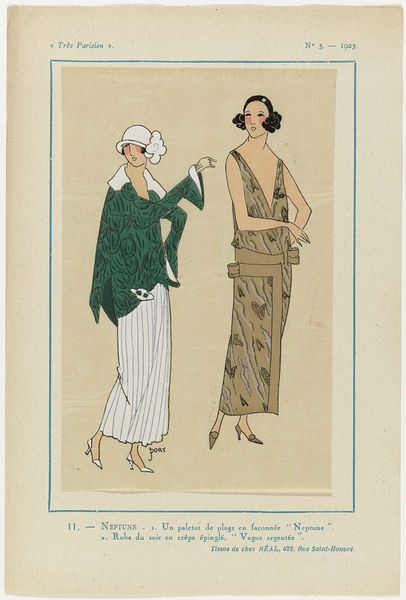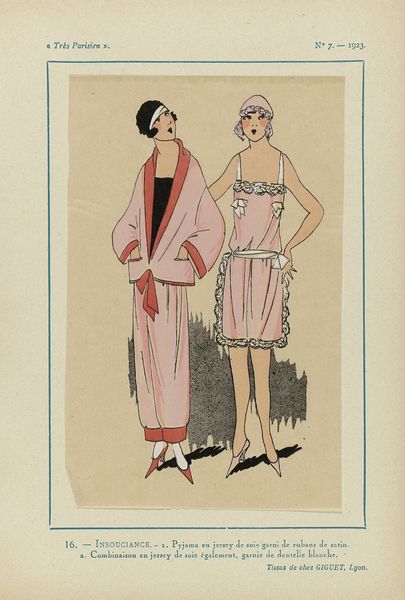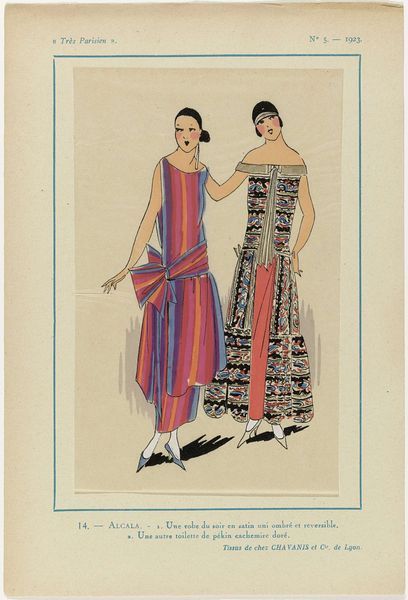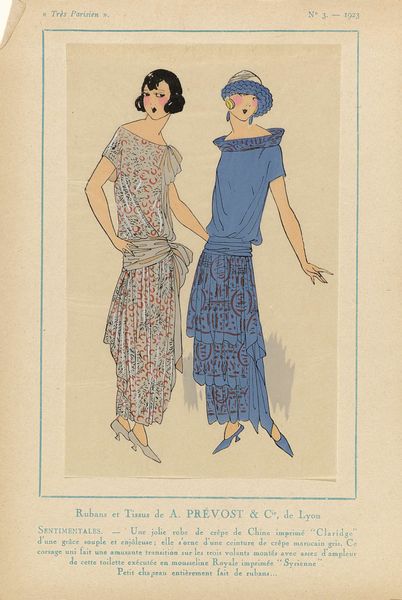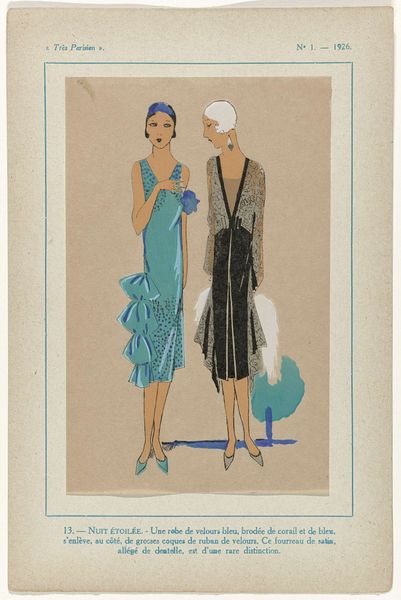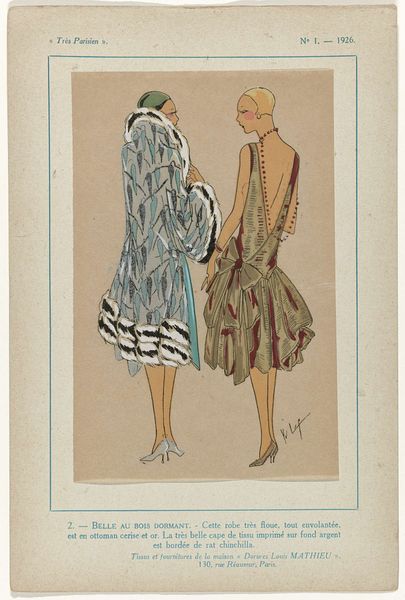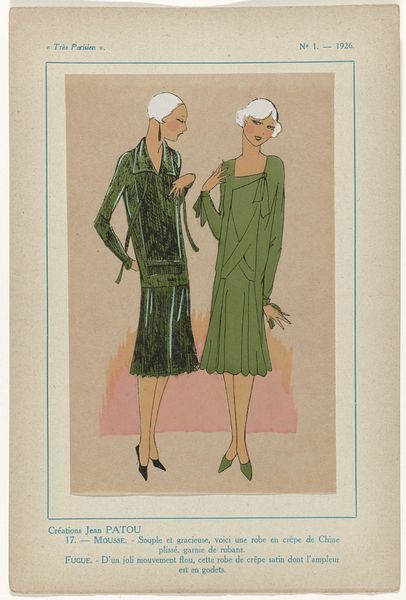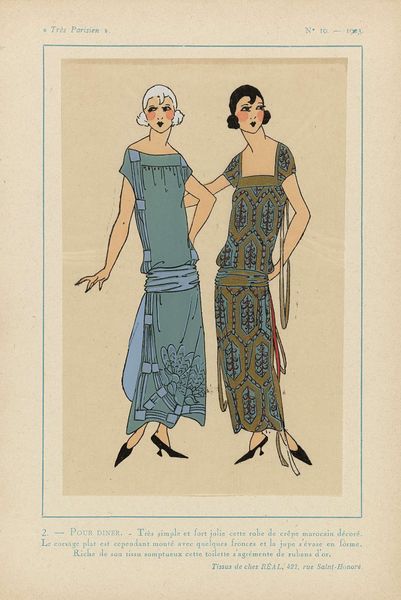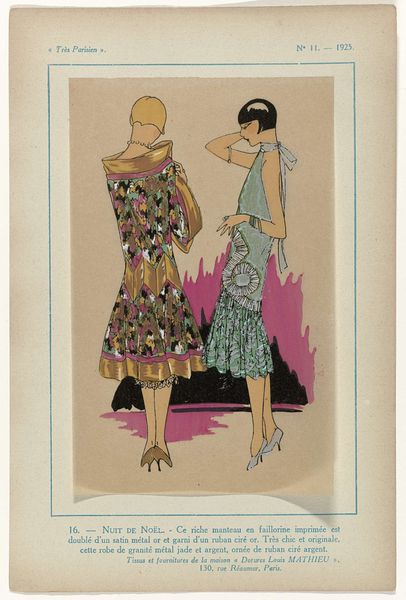
Très Parisien, 1923, No 6: 1 - EN SOIRÉE. - Somptueuse est cette robe... 1923
0:00
0:00
Dimensions: height 269 mm, width 180 mm
Copyright: Rijks Museum: Open Domain
Curator: Let's explore "Très Parisien, 1923, No 6: 1 - EN SOIRÉE. - Somptueuse est cette robe…", a striking watercolor print housed here at the Rijksmuseum. The title suggests an exploration of Parisian style. What are your initial thoughts? Editor: I’m immediately drawn to the materiality and the context surrounding dressmaking here; the printed textiles and watercolor on paper bring out a softness and quiet sophistication that feels very contemporary. It has a mood of careful construction, of skilled artisanal labor—not a mechanical reproduction. Curator: Indeed. If we dig deeper, this piece is a product of the Art Deco and Art Nouveau movements, which favored elegant design but also showcased innovative techniques of mass production and how that filtered down to create a burgeoning fashion industry aimed at women. Editor: And you see that here, right? The emphasis on luxurious yet accessible materials hints at this shift towards mass consumption while preserving some sense of "high art" craftsmanship with what appears to be watercolour. I'm interested in how fashion served as a site for experimenting with this balance, influencing gendered and raced dimensions. Curator: Precisely! These fashion plates weren't just about depicting clothes. They presented an image of the modern woman— independent, fashionable, and active in society. The artist emphasizes the dynamism of Parisian women through clothing, and perhaps suggests ideals of femininity through patterns, movement, and even textile choice. Editor: Right, the "Bengaline" imprimée is important because these choices of fabric shape how we experience labor; where textiles were sourced, who produced them, who could access the fashion. The geometric pattern printed throughout, its application through some sort of mechanized press–these material aspects deeply engage and inform understandings of that specific era. Curator: Thinking about identity again—these plates, while promoting a vision of female empowerment, also catered to a specific demographic. The image of sophistication comes at a certain price related to race and social class—and how consumption plays into aspirations for upward mobility in postwar European society. Editor: Absolutely. Thinking about it, focusing on these printed textures, considering what those textiles meant regarding access and mass-production shifts my understanding drastically! Curator: It's enriching how art pieces, like "Très Parisien," speak differently when seen through these multiple angles. Thank you. Editor: My pleasure; it’s vital to keep material and manufacturing in mind—even amidst high-fashion themes.
Comments
No comments
Be the first to comment and join the conversation on the ultimate creative platform.

